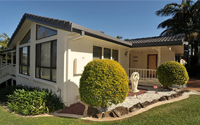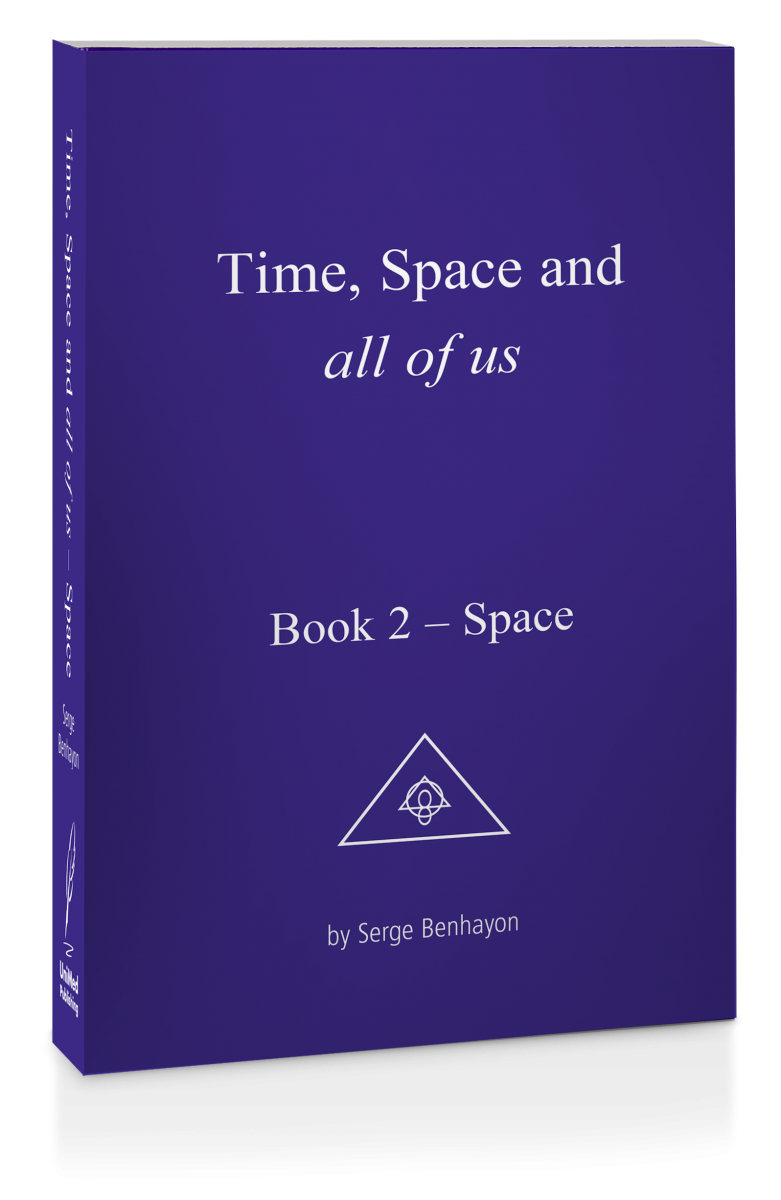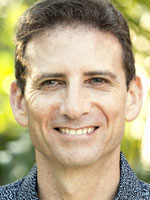Exercise for vital health and wellbeing
International Conference Presentations Paper
SA, Australia, April 2014
Article 2. Are we training too hard - A new marker of exercise intensity
ARE WE TRAINING TOO HARD A NEW MARKER OF EXERCISE INTENSITY Danielle J Pirera, Serge Benhayon
INTRODUCTION
Does the increase in research showing the benefits of explosive bursts of high-intensity training (1,2) explain the growing number of high-intensity fitness programs available worldwide?
Or what is driving people to train harder and harder? With the growing number of high-intensity training programs and fitness instructors who run these, there appears to be lack of awareness or understanding of how much intensity is too much, or when high-intensity becomes extreme intensity, when benefits are actually lost by the harm done to the body. What if the aim of exercise was to truly support the body, to be healthy and well, both in the shortterm immediate future and in the long-term future – would the workout be different? Is it possible that the workout would be done without putting any potential strain or inflicting harm on the musculoskeletal system and all physiological systems, including the cardiovascular and nervous system and the adrenals, which can all be compromised during extreme intensity or duration training?
If we were to train in a way that did not place any unnecessary or unhealthy strain on the physical and physiological aspects of the body, how would we monitor where this point was, and how would we ensure that enough exercise had been completed to experience the many benefits of exercise? We have introduced a method for monitoring exercise intensity that ensures that the workout is at a quality, level and duration to develop true health and wellbeing. It does not involve heart rates or workloads, but is instead according to what is felt in the breath and the body by the individual. This method requires a high level of self-connection and body awareness as well as an understanding of quality in breath, movement and presence and a commitment to constantly choosing this.
METHODS
Each participant in our exercise groups or one to one training sessions is encouraged to practise the following steps to develop a quality in their breath, presence and way of moving: 1. Connect to self, breath and body with a simple gentle breathing exercise, followed by a body scan.
2. Become aware of the quality of the breath in and out through the nose and any anxiety, 8 shortness or shallowness of breath or tension, holding, hardness, numbing, raciness or heaviness present in the body.
3. With a gentle breathing technique, develop a natural and surrendered quality in the breath and the way in which the body is held or left to be in a natural posture without any unnecessary physical tension. (This step to let go and surrender to a gentle breath with no raciness or physical tension may take time and require additional tools).
4. Make a marker of the quality of breathing and how the body feels in a natural posture, without any tension, strain, hardness or bracing in the body.
5. Maintain awareness of the breath and body throughout the exercise program, feeling how the breathing rhythm will change and feeling how the physiology in the body also changes, but ensuring that it does not drop into tension, holding, hardness, raciness or strain, in both breath and the body.
6. Ongoing development of a relationship with personal breathing and physical markers in the body of when the quality of the workout begins to decrease and tension or strain is brought to the body.
7. Training at their own pace or intensity according to what is felt in the body, with no need to move in time with everyone else in group fitness setting. Re-Connect Exercise Groups
OBSERVATIONS
Individuals who practise this way of being with their body during exercise are not only experiencing great benefits in their physiological health and wellbeing, but also in their psychological wellbeing in terms of self-worth and self-confidence.
See below for a list of statements from individuals following this way of exercising, which we call “Re-Connect Exercise”:
"Re-Connect Exercise sessions have completely changed my attitude to exercise. It is great fun to exercise in a group with the freedom to feel what and how I need to exercise and learn to trust and honour my body again." (Female, age 46)
"With Re-Connect I have learnt how to stay with my body during exercise rather than checking out to music as I used to do. Aside from being more fun, it leaves me feeling invigorated, very connected with myself and vital.” (Female, age 49)
“I've been attending Re-Connect Exercise groups and they have helped me bring a greater level and quality of awareness to the weight training exercises I already do. As I gradually incorporated the Re-Connect Exercises into my workouts I found that I accessed a depth, quality and feeling in my body like no other exercise regime that I have tried before… and that's in 30 years of exercising.” (Male, age 46)
"After attending a Re-Connect Exercise group recently with Danielle, I have been experiencing how much fun I can have exercising and knowing now that there are no rules, I just feel what my body needs, what type of exercise, and what level - depending on how my body is feeling that day. This is a great difference compared to the pushing through that we are taught, no matter how our bodies are feeling. I feel more energised and more connected to myself throughout the rest of the day just by allowing some time for me and my daily exercise." (Female, age 21)
"The four-week Re-Connect Exercise programs are not only fun but deeply supportive for my body. To move within its own realm and loving rhythm has helped me hold an appreciation for the body I now have that I did not have before." (Female, age 41)
“I have been doing Re-Connect Exercise via the Internet for the past few weeks and have been so inspired at how simple exercise can be. I now take that way of doing a workout to the gym with me, to work with me, away on business with me. The only thing I really need in all those scenarios is me and what I have found works in my body. Thanks Danielle. I look forward to the next group exercise program." (Female, age 45)
“Re-Connect Exercise has enabled me to see how loving, gentle and joyful exercise can be. It is a wonderful way to connect to the body.” (Female, age 49)
"The gentle exercises are a lovely way to be with me, allowing me to tune into what my body really needs. It stops the push and the mind chatter, so the energy stays with the exercises making them all the more beneficial. I love gentle exercises, they are fun and effective." (Female, age 53)
“During and following the Re-Connect Exercise groups with Danielle, I have discovered that exercise can be lots of fun! By learning to listen to my body, and developing this awareness more and more, I am learning that I can exercise in a way that supports my body without having to push or strain myself, while having a great workout at the same time! A highly recommended (fun) way to exercise!” (Female, age 46)
"Since I started doing Re-Connect exercise each morning and sometimes every second morning, I can feel just how lovely it is to exercise in a gentle way while also getting a working-out! It's a freeing, non-restricting, beautiful movement that leaves me with even more energy for the day - I feel myself letting go as if I was a child playing again. So Refreshing." (Female, age 16)
"The exercise classes have been awesome. I have never exercised in my life and really didn't think it was something for me. I now love exercising and finding muscles in my body that I never knew existed. I don't have to hurt my body or overdo it. In the class I have been supported to go at my own pace, connect with my body and build it gently and I love it and look forward to each and every class. As my body has slowly strengthened, I have felt so much better in my body and in my moods. It supports me for the whole day." (Female, age 34)
10 DISCUSSION AND FURTHER RESEARCH
Is it possible that monitoring exercise intensity and workout duration according to time, sets, reps, a music track or in competition with another may not be in tune with what the body truly needs to exercise for true health and wellbeing? If not for true health and wellbeing then what is the goal or aim of such exercise? Day to day variation in exercise intensity, duration and type can be modified according to the natural and cyclic changes in the body and by making changes during a training session according to what is felt in the body. Exercising in such a way requires a high level of body connection and awareness and also allows for a choice in the quality of the movement of each exercise. Introducing a way of exercising that is according to a quality of breath and presence in the body may be a way to educate trainers about a safe and effective way of exercising for true health and wellbeing. It is the responsibility of the scientific community and leaders in the exercise industry to introduce a way of exercising that is for true health and wellbeing, that is achievable, enjoyable and inspiring for everyone and not in any way harmful for the body. Further research is needed on this way of exercising or being in the body, and the many benefits, to support an increase in awareness within the fitness industry of exercising for true health and wellbeing.
REFERENCES
1. Kemi, Ole Johan PhD; Wisløff, Ulrik PhD. High-Intensity Aerobic Exercise Training Improves the Heart in Health and Disease. Journal of Cardiopulmonary Rehabilitation & Prevention: January/ February 2010 –Volume 30 – Issue 1 – p 2-11
2. Martin J. Gibala1 , Jonathan P. Little2 , Maureen J. MacDonald1 andJohn A. Hawley. Physiological adaptations to low-volume, high-intensity interval training in health and disease. The Journal of Physiology. Volume 590 – Issue 5 - pages 1077–1084, March 2012
ARE WE TRAINING TOO HARD – A NEW MARKER OF EXERCISE INTENSITY
INTRODUCTION
Does the increase in research showing the benefits of explosive bursts of high-intensity training (1,2) explain the growing number of high-intensity fitness programs available worldwide?





